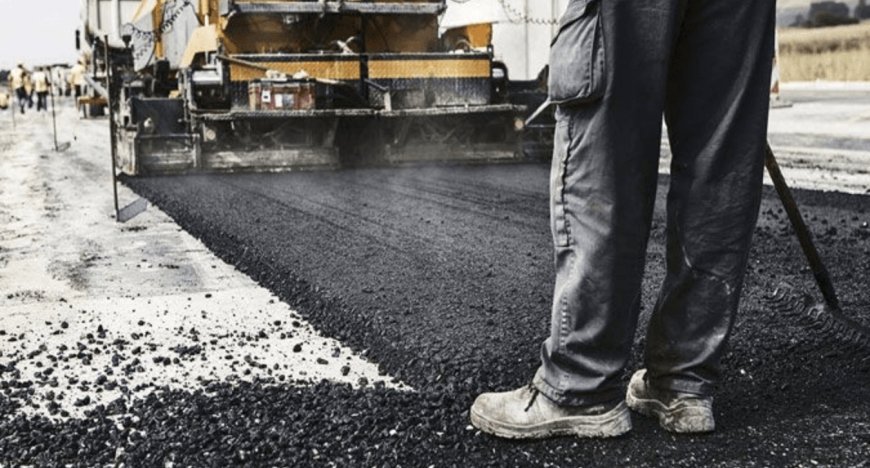Top 10 Benefits of Asphalt Patching for Roads

Asphalt roads are an important part of modern infrastructure, providing durable and smooth surfaces for vehicles and pedestrians. However, over time, they suffer constant wear and tear due to weather conditions such as rain, UV exposure, temperature fluctuations, and environmental factors like tree roots or oil spills. Additionally, the continuous stress from heavy traffic, including trucks and buses, contributes to the gradual degradation of the asphalt surface. If not maintained properly, these small issues can escalate into larger, more costly problems.
One of the most cost-effective and efficient ways to preserve and extend the lifespan of asphalt surfaces is through patching. Asphalt patching is the process of filling potholes, cracks, and other surface imperfections to restore the road’s integrity and smoothness. There are different patching methods available depending on the severity and type of damage—these include cold patching, hot mix patching, skin patching, and infrared patching. Each method has its own benefits, but all aim to improve safety, enhance ride quality, and prevent further deterioration.
Regular asphalt patching not only improves road aesthetics but also plays a critical role in preventing accidents caused by uneven or damaged surfaces. For municipalities, commercial properties, and homeowners alike, timely patch repairs offer a practical solution to protect investments and ensure road usability for years to come.
The 10 top benefits of asphalt patches that every municipality, contractor, and property owner needs to know.
1. Improves Road Safety
Asphalt patching can immediately improve safety. Potholes, cracks, and other road hazards can be dangerous for motorcyclists and cyclists. Uneven surfaces may cause accidents or damage to vehicles. These dangers are eliminated by patching, making the road safer for all.
2. Extends Road Lifespan
Asphalt patching is an important strategy to protect the investment in roads. Patching prevents road structural damage by addressing localized damages before they spread.
3. Cost-Effective Maintenance
Asphalt patching is a much cheaper alternative to full reconstruction and repaving. Regular patching can extend the time between major rehabilitations, saving both local governments and private property owners money.
4. Fast and Efficient Repair
Asphalt patching can be done relatively quickly. The work can be done in a few hours, depending on whether the patching is thrown-and-rolled, semi-permanen,t or full depth repair. It means that traffic and road access are not disrupted.
5. Reduces Vehicle Damage
Poor road conditions can cause tire damage, suspension issues, and alignment problems. Asphalt patching keeps roads safe and free of hazards, preventing costly vehicle repairs.
6. Enhances Aesthetic Appeal
The overall appearance of a place is enhanced by a well-maintained surface. Potholes and cracks in the road can make a neighborhood or business district look uncared for. Newly repaired roads enhance curb appeal in commercial and residential zones.
7. Environmentally Friendly Alternative
It is more environmentally friendly to patch roads than to resurface them, as it uses less material and produces less waste. Patching is a more sustainable option than repaving because it recycles old asphalt.
8. Prevents Water Infiltration
Potholes and cracks in the road allow water to seep through into its base layer. This can lead to erosion, cracking, and damage from freeze-thaw in colder climates. The asphalt patching blocks these water entry points and prevents further damage to the road structure.
9. Supports Local Economic
Asphalt patching and other road maintenance projects create jobs in the local area for construction workers, suppliers, and equipment operators. Prioritizing small-scale repairs allows municipalities to support local contractors while keeping money in the community.
10. Customizable solutions for different damage levels
Asphalt patching is flexible and can be used for different types of road damage. Patching techniques can be tailored according to severity and location. The targeted approach to repairs ensures that they are both cost-effective and effective.
Final Thoughts
Asphalt patching offers more than a quick fix. It's an investment for long-term infrastructure maintenance. It's clear that patching is a key component in any road maintenance plan, as it offers many benefits from cost savings to safety improvements.
Regular asphalt patching is essential for maintaining surfaces that are functional, safe, and attractive. Patching prevents minor problems from becoming major ones.
Asphalt patching should be part of any road maintenance plan. This is a small investment that will yield big results
What's Your Reaction?



















































